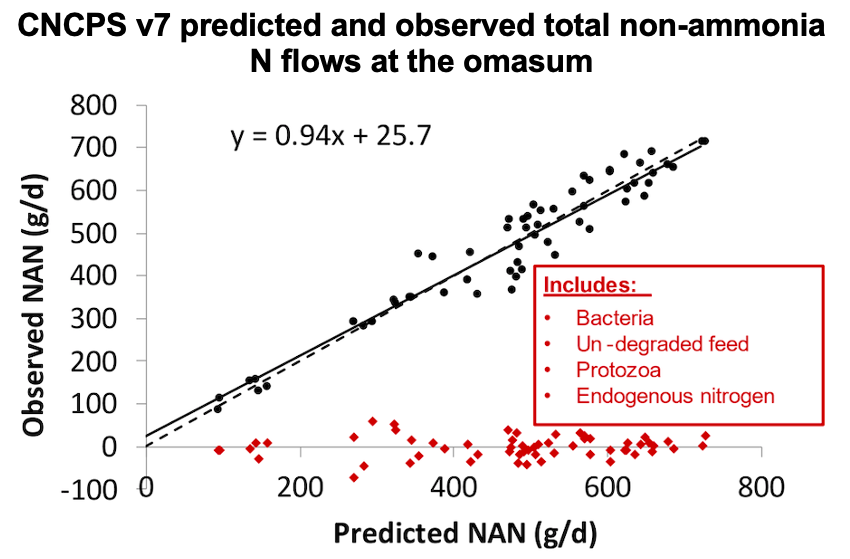Cow Data That Keeps Coming
Many factors today boost the value of up-to-date and accurate predictions of dairy nutrient requirements and supply: Volatile ingredient prices, variable on-farm forage, tightening quality parameters, and much more.
There’s increasing processor specialization and the value of milk components can differ by region. In the Northeast, for example, producers seek to increase milk fat and protein without increasing milk volume.
Continuous testing with cows allows nutritionists to reference what Cornell University’s Dr. Mike Van Amburgh calls a “living document” in order to predict nutrient requirements and feed utilization in specific production settings.
“The beauty of the CNCPS (Cornell Net Carbohydrate and Protein System) development is that it is an ongoing, iterative process, producing increasingly accurate predictions.”
Over the past few years, Van Amburgh points out, it has encouraged nutritionists to rethink crude protein in diet formulation in terms of nitrogen (N) for rumen requirements versus amino acids (AA) for milk synthesis.
“The ruminal requirements for N and AA are driven by microbial requirements, and the rumen has different requirements than the cow. Refining ruminal requirements separately from post-ruminal AA requirements and supply offers opportunities to lower N in the diet while increasing valuable milk components such as milk fat.”
To illustrate, Van Amburgh points to recent research on the effect of monensin on milk fat (Benoit et al., 2021), in which the treatment diet followed AA requirements and feeding for optimal components learned from CNCPS development. Monensin studies are an interesting data set in themselves because they represent a variety of diet formulation methods over the course of more than two decades.
For the recent monensin milk fat study, the Cornell researchers formulated the diet per CNCPS v6.55, supplementing methionine and lysine on a gram per unit of metabolizable energy (ME) basis with the methionine requirement set at 1.19 g per Mcal ME and lysine set at 3.21 g per Mcal ME, which is 2.7 times the grams of methionine. Cattle responded by maintaining 88-90 lbs of milk with an increase to 4.6-4.7% milk fat and 3.2% milk protein for nearly 7 lbs of components in cows averaging 190 DIM (days in milk).
The software enables monitoring of rumen unsaturated fatty acid load (RUFAL), dietary fat, starch, and neutral detergent fiber (NDF) content and digestibility, which helps avoid diet induced effects on milk fat.
Learn more about the commercial availability of CNCPS Version 7 at the upcoming Cornell Nutrition Conference.
Questions?
Email FeedInsight 4Dairy


